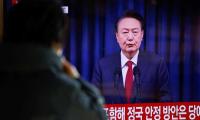As the Taliban overtook Kabul and now-former president Ashraf Ghani fled the country, Afghanistan stands to face its most urgent humanitarian crisis in two decades.
More than 80 percent of the population has already been internally displaced due to the ongoing violence. With the goal of establishing an Islamic Emirate under strict Shariah, the new Taliban regime -- given its history of violent human rights violations -- is likely to become an especially brutal place for women and children.
In 2016, Human Rights Watch (HRW) reported a massive surge in the Taliban’s recruitment of children as young as 13 years old into their militant ranks. A steady increase has been consistent since then, and now with state control in their hands, children are even more in danger now of recruitment into forced training and combat. This not only strips them of their most basic right to safety and education but is classified clearly as a war crime by the International Criminal Court.
For women in Afghanistan, the fear of what the future looks like is rampant. Under the last Taliban regime two decades ago, regular protocol restricted women from work, schooling, seeking healthcare, leaving their homes without male relatives or even being in their own homes without painted or covered windows. Sexual violence, abduction and forced marriage were common and women’s safety therefore heavily disregarded. A 2001 report from the US State Department details the harsh rules and impacts of the last regime.
Now, the Taliban are making claims of wanting a peaceful transition to power and their desire to protect women’s rights within the boundaries of Shariah. It would be a dire mistake to trust claims that the new regime itself would ensure safety of women and children without external intervention, given their past record and ideological standing. Human Rights Watch has accurately termed their latest claims as being a “major disconnect between what they said in TV interviews and what they did on the ground.”
The very first days of their advance into Kabul more than proves exactly this. Within the first week, accounts of women across the country, particularly in Herat and Kabul, arose of being barred from entering their universities and workplaces. More horrifying were accounts of women and girls’ abduction from their own homes into forced marriages. There are fears that women and young girls will be treated as little more than spoils of war for militants. Those who have escaped this violence continue to express fear for their lives, especially female journalists and women who have been vocal or empowered in their views against the regime. The UN High Commission for Refugees (UNHCR) has reported around 250,000 Afghans fleeing since May, of which 80 percent are women and children.
It falls then on the international community to look towards support and intervention mechanisms to protect the urgent safety and rights of women and children. While the US and other countries are assisting in evacuations and taking refugees, organisations including Unicef are working tirelessly on ground for the children who remain. The question now is what role exactly the international community should play.
An old favourite is targeted sanctions via the UN Security Council, but this would best be avoided. It goes without saying that vulnerable groups are most under threat when war conditions are worse. Pakistan should voice its opposition to measures which would cripple Afghanistan’s economy further and aggravate greater Taliban violence.
Instead of negative sanctions, Pakistan and other countries need to collaborate closely with local Afghan stakeholders to certify that women’s access to employment and education as well their freedom within those spheres is as little curtailed as possible.
We should focus on supporting local bodies providing urgent shelter and aid to women and children and working to safeguard those who have been displaced. Particular effort should be put towards aiding women and girls who have been victims of sexual violence, with special rehabilitation for them to include trauma therapy and shelter as they help to empower them for a safer future.
It is inevitable that many women will lose the places they have held in education and employment. For this reason, it is vital for us to help in also creating alternative opportunities for Afghani children and women to study and earn in safer environments. Humanitarian efforts should not just protect but also retain and empower the existing skills they have.
Local NGOs and social workers should be funded and helped to create women-run workspaces and teaching centres to maintain and build a form of independence even for those who have been or may find themselves displaced or under threat in their current situation. Since the takeover of Afghanistan by the Afghan Taliban, the uncertainty of their situation has been cast aside for outright dread; and women and children who now have the least say in state matters are counting on the supportive efforts of donor countries.
The writer is a leading global expert on issues pertaining to women’s empowerment, gender mainstreaming, sustainable development, inclusive growth and impact investment, financial inclusion access to energy and climate change.
This policy shift diverges significantly from global practices in higher education governance
It’s not just about patching things up after disasters but about building future where we’re better prepared
Apathy of state to constitutional right to education of all children is evident from few alarming facts
Pakistan has witnessed over 150 killings of journalists in the past 25 years
Women engage in various labour-intensive tasks such as planting, weeding, harvesting, and livestock management
Decreasing of migratory birds at Nareri Lake is indicator of harsh realities of climate change in region







